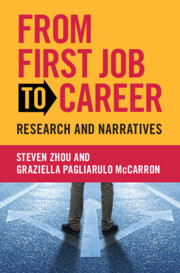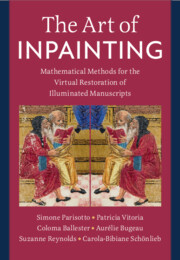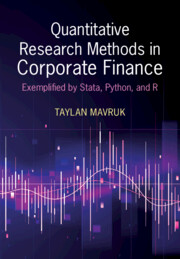Refine search
Actions for selected content:
57 results

Satellite Remote Sensing for Water Management
-
- Published online:
- 10 October 2025
- Print publication:
- 04 September 2025
-
- Textbook
- Export citation

From First Job to Career
- Research and Narratives
-
- Published online:
- 19 September 2025
- Print publication:
- 21 August 2025
A CASP-Based Solution for Traffic Signal Optimisation
-
- Journal:
- Theory and Practice of Logic Programming , First View
- Published online by Cambridge University Press:
- 12 September 2025, pp. 1-19
-
- Article
-
- You have access
- Open access
- HTML
- Export citation

The Art of Inpainting
- Mathematical Methods for the Virtual Restoration of Illuminated Manuscripts
-
- Published online:
- 22 May 2025
- Print publication:
- 22 May 2025
5 - Methods Inspired from Cultural Heritage
-
- Book:
- The Art of Inpainting
- Published online:
- 22 May 2025
- Print publication:
- 22 May 2025, pp 162-174
-
- Chapter
- Export citation

Quantitative Research Methods in Corporate Finance
- Exemplified by Stata, Python, and R
-
- Published online:
- 20 March 2025
- Print publication:
- 20 March 2025
-
- Textbook
- Export citation
7 - Time-Series Analysis
-
- Book:
- Quantitative Research Methods in Corporate Finance
- Published online:
- 20 March 2025
- Print publication:
- 20 March 2025, pp 127-163
-
- Chapter
- Export citation
10 - Selection of Models with Limited Dependent Variables
-
- Book:
- Quantitative Research Methods in Corporate Finance
- Published online:
- 20 March 2025
- Print publication:
- 20 March 2025, pp 214-249
-
- Chapter
- Export citation
6 - Endogeneity Bias
-
- Book:
- Quantitative Research Methods in Corporate Finance
- Published online:
- 20 March 2025
- Print publication:
- 20 March 2025, pp 90-126
-
- Chapter
- Export citation
Laser spectroscopy: A potential versatile solution for radiocarbon analyses
-
- Journal:
- Radiocarbon / Volume 67 / Issue 3 / June 2025
- Published online by Cambridge University Press:
- 13 March 2025, pp. 565-577
- Print publication:
- June 2025
-
- Article
-
- You have access
- Open access
- HTML
- Export citation
Chapter 39 - “I Wish I Could Be Like a Tree”
-
-
- Book:
- Pillars of Developmental Psychology
- Published online:
- 14 February 2025
- Print publication:
- 20 February 2025, pp 445-457
-
- Chapter
- Export citation
Chapter 6 - Studying Children in Sociocultural Context: A Widening Journey
-
-
- Book:
- Pillars of Developmental Psychology
- Published online:
- 14 February 2025
- Print publication:
- 20 February 2025, pp 55-67
-
- Chapter
- Export citation
8 - Stylistics
-
- Book:
- Stylistics
- Published online:
- 18 February 2025
- Print publication:
- 09 January 2025, pp 263-278
-
- Chapter
- Export citation
18 - Time-Dependent Perturbation Theory
-
- Book:
- Quantum Mechanics through Problems
- Published online:
- 05 December 2024
- Print publication:
- 12 December 2024, pp 669-725
-
- Chapter
- Export citation
1 - Introductory Concepts
-
- Book:
- Population Balance of Particles in Flows
- Published online:
- 14 November 2024
- Print publication:
- 21 November 2024, pp 1-23
-
- Chapter
- Export citation
9 - Shock–Boundary-Layer Interaction
-
- Book:
- Flow Control
- Published online:
- 04 April 2024
- Print publication:
- 11 April 2024, pp 377-407
-
- Chapter
- Export citation
5 - Free Shear Layers and Jets
-
- Book:
- Flow Control
- Published online:
- 04 April 2024
- Print publication:
- 11 April 2024, pp 175-219
-
- Chapter
- Export citation
3 - Bluff Body Wakes
-
- Book:
- Flow Control
- Published online:
- 04 April 2024
- Print publication:
- 11 April 2024, pp 92-135
-
- Chapter
- Export citation
4 - Separated Flows
-
- Book:
- Flow Control
- Published online:
- 04 April 2024
- Print publication:
- 11 April 2024, pp 136-174
-
- Chapter
- Export citation
10 - Flow Control by Design
-
- Book:
- Flow Control
- Published online:
- 04 April 2024
- Print publication:
- 11 April 2024, pp 408-431
-
- Chapter
- Export citation
